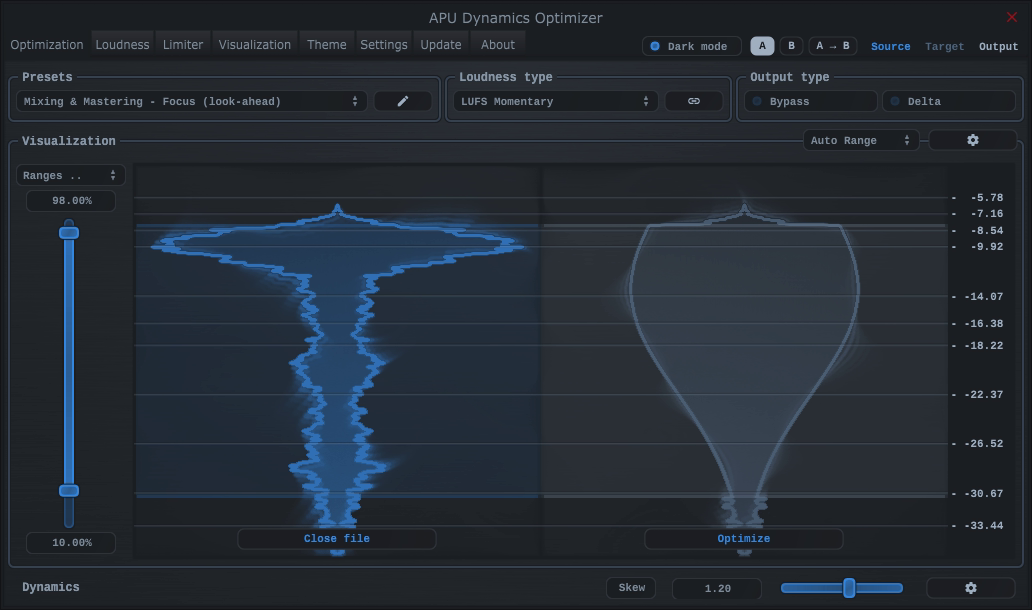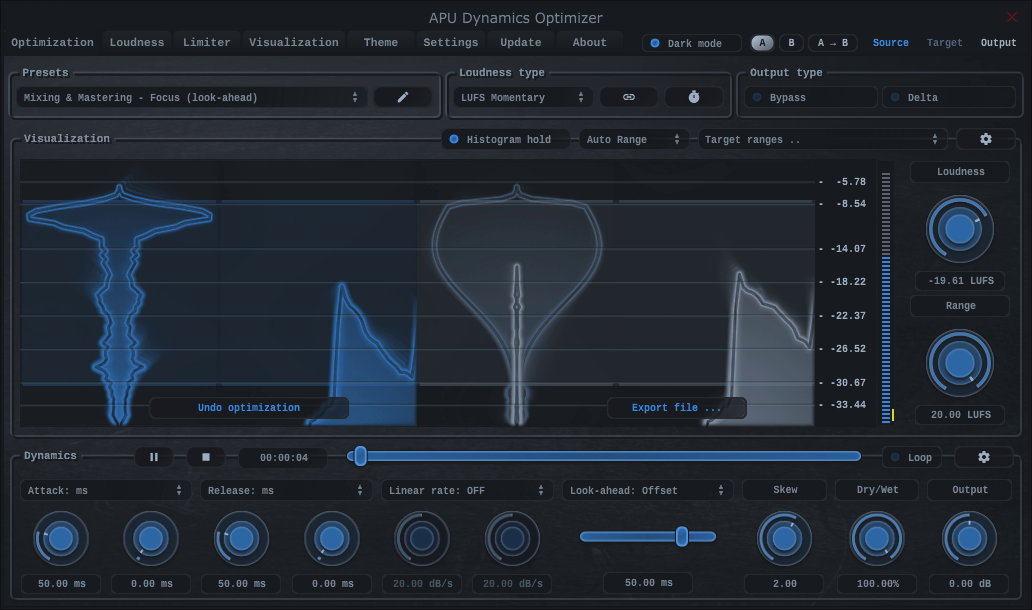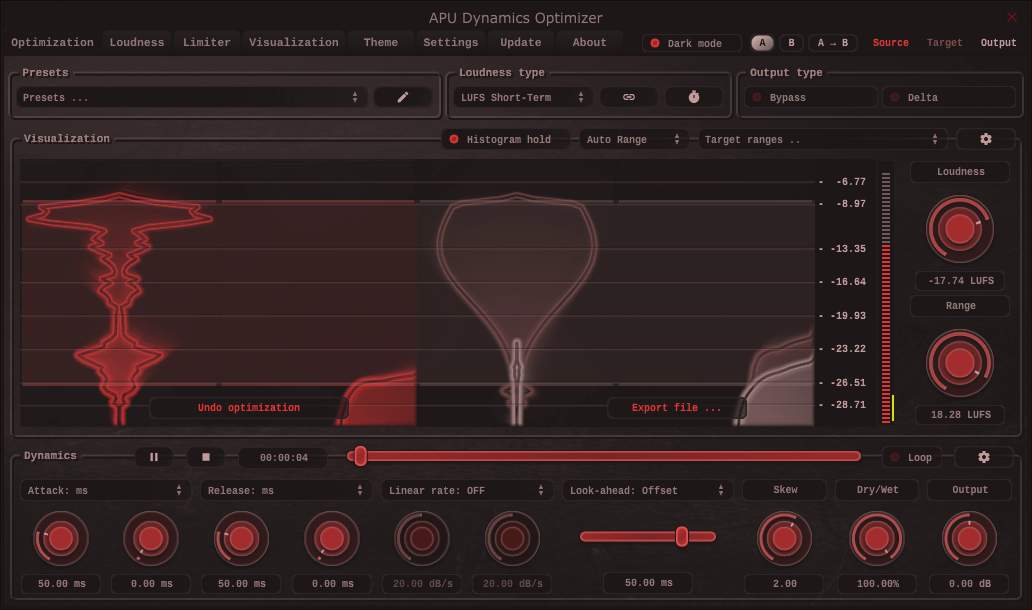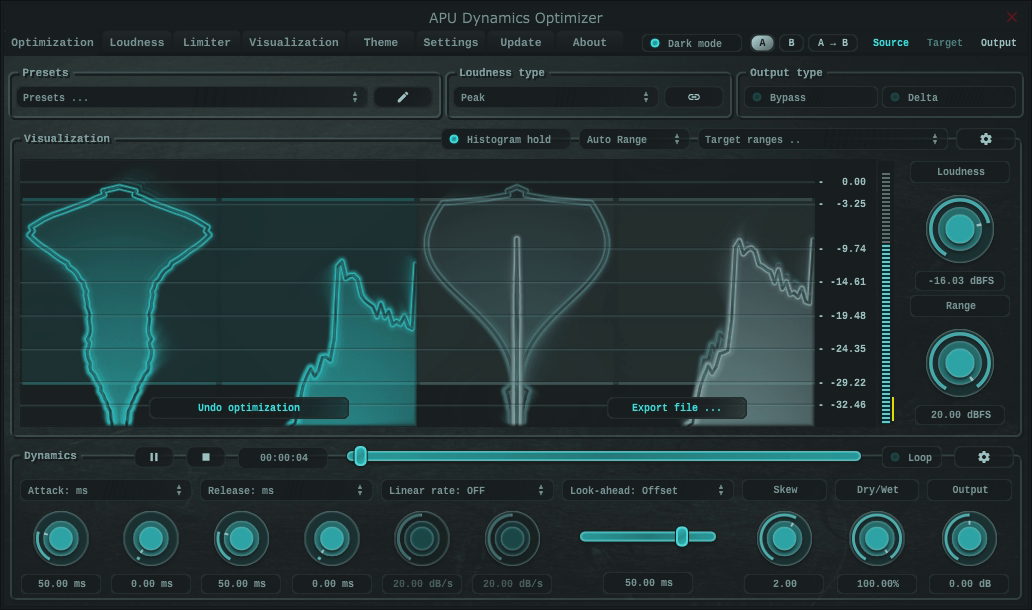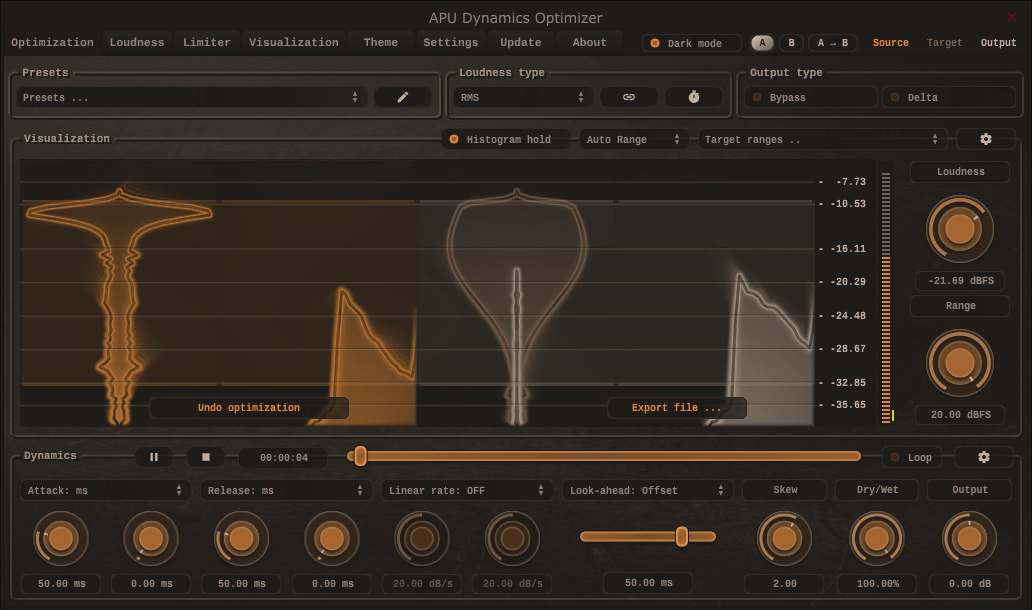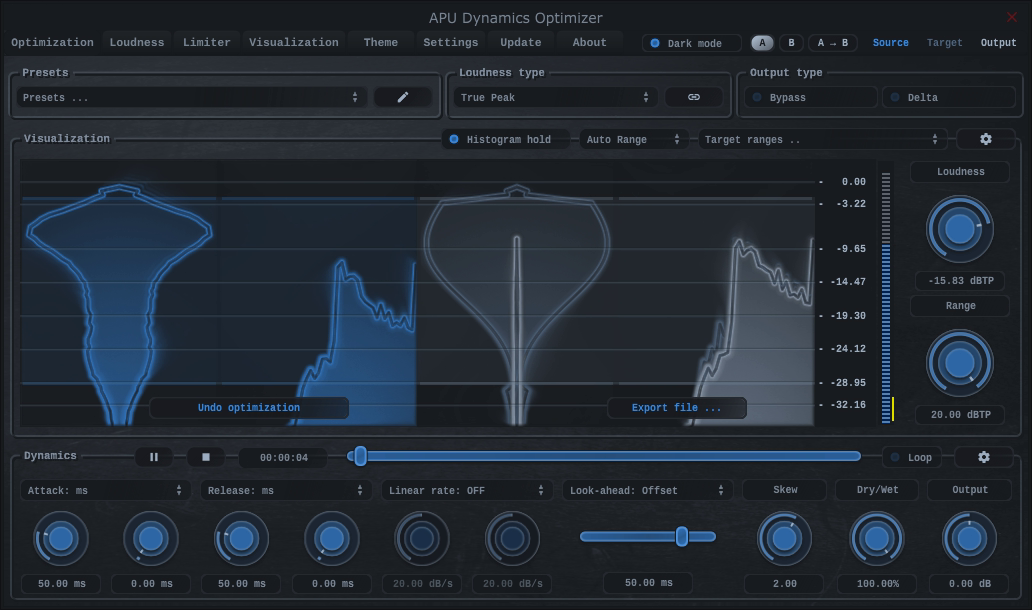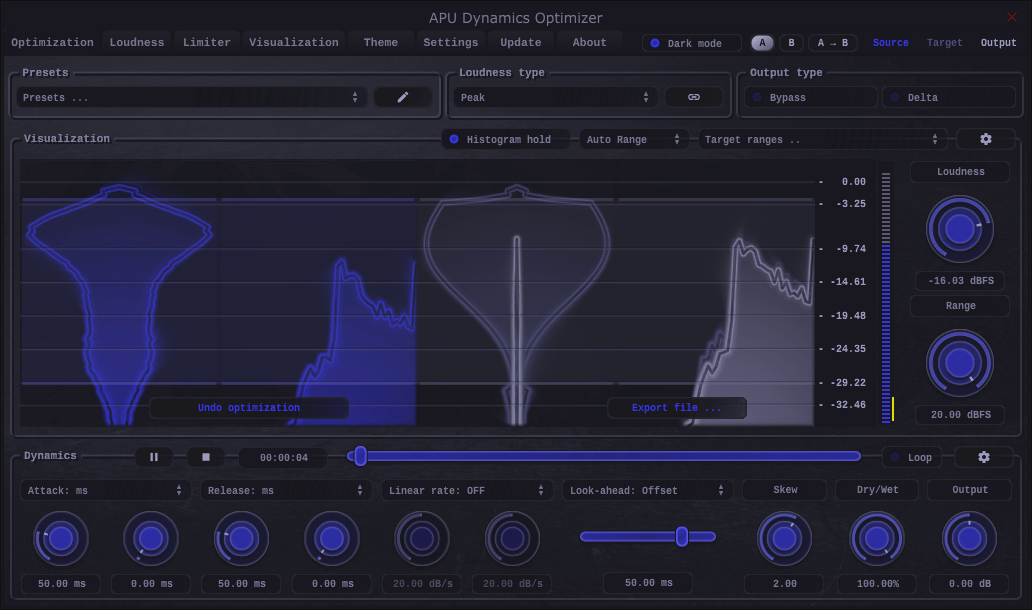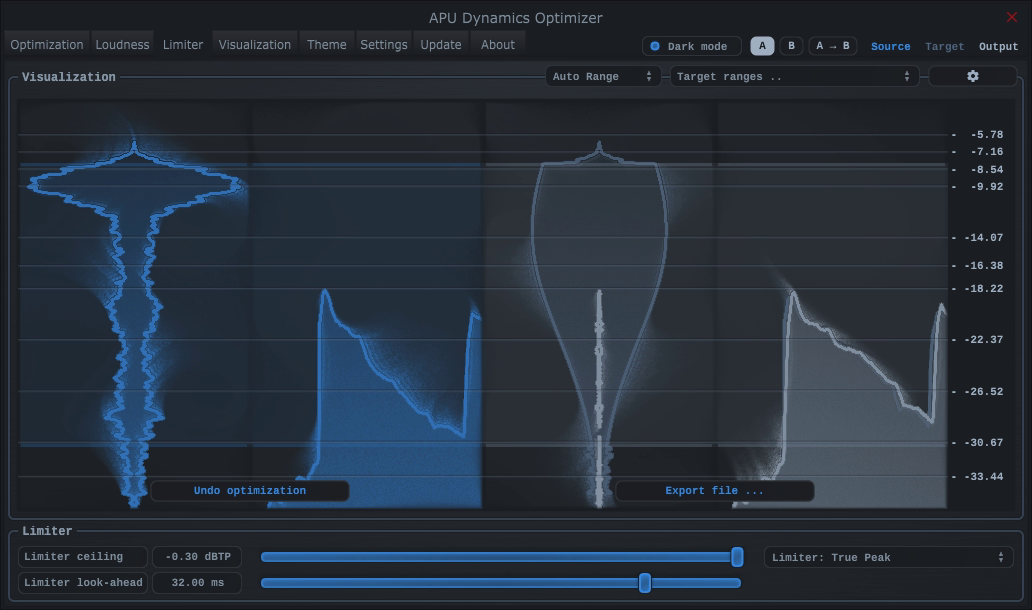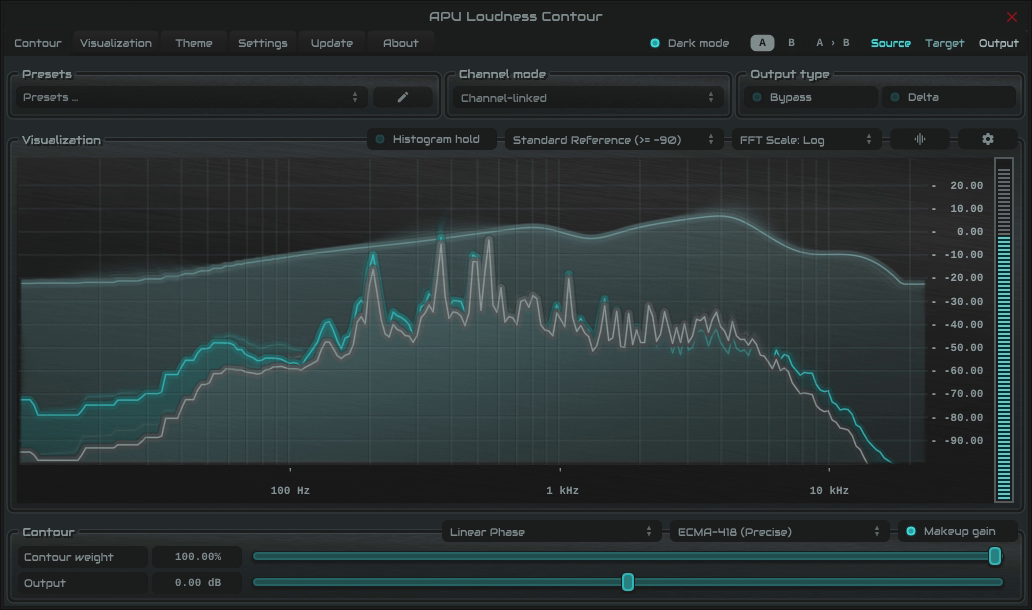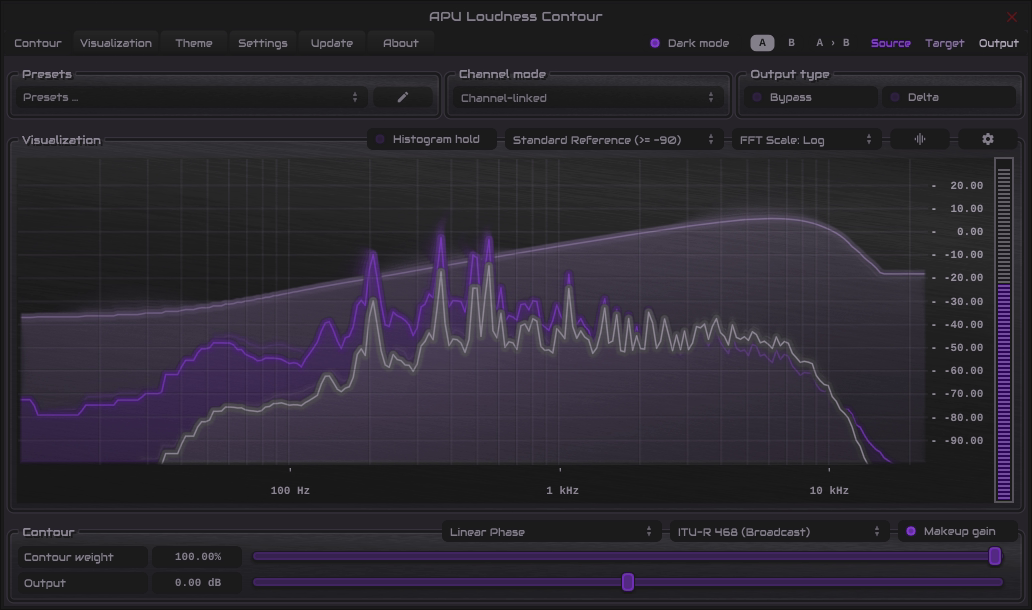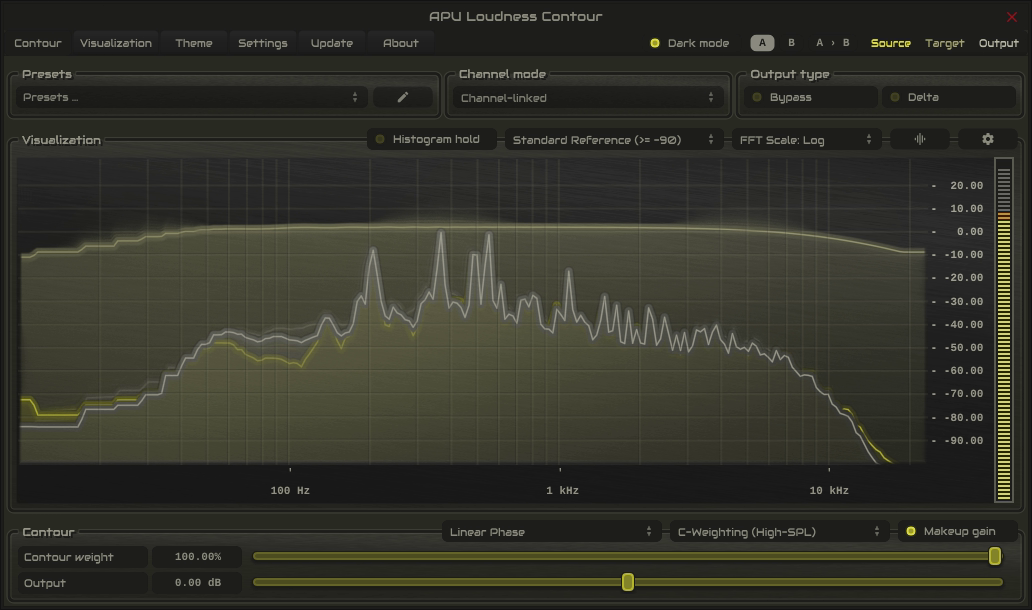A Different Approach to Dynamics.
The APU Dynamics Optimizer offers a unique way to shape the loudness of your audio. It starts by performing an up-front analysis of the entire file, which allows it to understand the full dynamic landscape before making any changes.
Once the analysis is done, the real work begins. You’re presented with a visual representation of your audio’s loudness distribution, which you can then reshape to a target distribution-either uniform or normal. The powerful part is that you can manipulate the target range, distribution shape, and even traditional compressor controls like attack and release, all in real-time while playing back the audio. This lets you hear the effect of your changes instantly and dial in the exact dynamic character you’re looking for.
Of course, it supports a wide range of loudness measurement modes, including LUFS (Momentary, Short-term, Integrated) as well as traditional RMS and Peak/True Peak. You can also fine-tune the detector’s response with various weighting options. When you’re happy with the result, you simply export the file to pristine float 32-bit wav.
This is a standalone tool, and for a good reason: it needs to see the whole picture to work its magic. It’s designed for a deliberate and precise workflow, giving you a level of control that’s simply not possible with a traditional real-time compressor.
Note: Existing customers can request a discount code using the support beacon on the bottom-right.
System requirements: macOS 10.14 (x64, ARM), Windows 10 (x86, x64), OpenGL 3.2.
Supported software formats: Standalone application, VST, AU, AAX (Pro Tools 11+).





